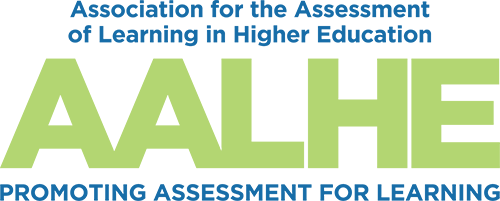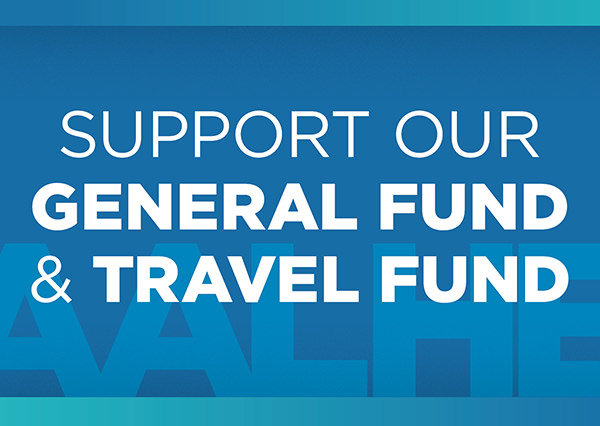- Home
- About AALHE
- Board of Directors
- Committees
- Guiding Documents
- Legal Information
- Organizational Chart
- Our Institutional Partners
- Membership Benefits
- Member Spotlight
- Contact Us
- Member Home
- Symposium
- Annual Conference
- Resources
- Publications
- Donate
EMERGING DIALOGUES IN ASSESSMENTPreparing Students for High-Stakes, Performance Based Assessments at UNC Charlotte
March 8, 2023 Erik Jon Byker, Ph.D. One problem of practice that many educators encounter is how to best prepare their learners for high-stakes assessments that are evaluated to determine whether the learners can earn licensure for their fields of practice. I teach an instructional design course for teacher candidates in the Cato College of Education at the University of North Carolina at Charlotte. This course includes a comprehensive practice assignment to prepare the teacher candidates for completing a high-stakes assessment. In the field of teacher education, many teacher candidates across the United States are now required to pass high-stakes, performance-based assessments in order to earn initial teaching licenses. One such assessment is called the Educative Teacher Performance Assessment (SCALE, 2015), which is commonly referred to by the acronym: edTPA. The Stanford Center for Assessment, Learning, and Evaluation (SCALE) developed the edTPA, which was the first nationally-normed and validated performance-based assessment for teacher candidates in the United States (SCALE, 2015). Teacher candidates in more than 35 states and the District of Columbia are required to complete the edTPA portfolio at the end of their educator preparation programs for teaching licensure (SCALE, 2019). Policies in many states also require teacher candidates to earn minimum passing scores on the edTPA in order to secure an initial teaching license. The teacher candidates’ portfolios are scored by Pearson SCALE trained scorers (SCALE, 2019). Teacher candidates submit the edTPA to as evidence of their own teaching quality. The challenge for candidates being judged by the edTPA is that it is quite comprehensive and can easily overwhelm teacher candidates. This may be partly related to the edTPA name itself — edTPA sounds like some kind of evil acronym out of a Netflix series like Stranger Things. Yet, it is important for teacher candidates to develop the instructional practices included as criteria within the edTPA so they are prepared to teach and be responsive to their students. Preparing for the edTPA adds to the stress of this course. I wrote a book chapter (Byker et al., 2017) about teacher candidates’ perceptions of the edTPA. I think one teacher candidate best summed up the feeling that many teacher candidates share when it comes to edTPA; the teacher candidate said when interviewed for a book chapter, “edTPA is like a dental appointment because it may be good for your skills but is mostly painful” (Byker et al., 2017, p. 81). The alternative would be not to practice for the edTPA; consequently, the teacher candidates would have to attempt navigation of the edTPA preparation with very little assistance during their student teaching. Teacher candidates have improved their edTPA scores over the past several years at my university, but they continue to report that they find the edTPA to be tedious. They also desire better preparation and more feedback on the extensive commentary writing that is part of the edTPA Portfolio. As a teacher educator, I want to best prepare teacher candidates for the edTPA since the assessment is consequential for their teacher licensures. I believe providing feedback to the teacher candidates is a key part of their successes in alleviating some of the pain of the edTPA. Addressing the Problem of Practice To address the problem of practice related to providing more detailed feedback on my teacher candidates’ preparation for the edTPA; I found the integration of technology to be important. For example, a technology called Gradescope (GS) proved to be helpful providing meaningful feedback to my students. GS is an evaluation and grading software that can be used to grade and provide feedback within learning management systems like Canvas. The feedback can be purposely aligned to rubrics that help to support students in clearly understanding how they can improve their writing for each section of an assignment. The integration of rubric based feedback also mimics how the teacher candidates are evaluated by edTPA national scorers. My goal for providing more detailed feedback—aligned to specific edTPA rubrics—was to utilize the feedback for my teacher candidates to pinpoint how they could improve their writing for edTPA. Involving the Class in the Decision-Making Initially, I planned to utilize the GS technology to provide targeted feedback for the teacher candidates on their practice of Task 1 for the edTPA Portfolio. The purpose of Task 1 is lesson planning. Teacher candidates prepare a three-lesson-plan sequence, which is called a learning segment. Each lesson plan is 4 pages long, and Task 1 also includes a 9-page commentary that the teacher candidates compose, reflecting on their purposeful planning of the learning segments. Early in the semester, I demonstrated and discussed the features of GS with the teacher candidates. Together, we made the decision to use Google Docs for their initial rounds of feedback on the Task 1 lesson plans and commentaries. The teacher candidates thought it would be more effective to use GS for the Self-Assessment of their Task 1 practice assignments in order to examine the edTPA rubrics in more depth. The teacher candidates perceived that Google Docs provided a more seamless way for sharing beginning-levels feedback, because the teacher candidates could share their Google Doc with me directly rather than having to upload it through the Canvas learning management system. I provided several rounds of comments and edits on their Google Doc rough drafts. The teacher candidates could immediately read those comments and see the edits in their Google Doc drafts. After this, the teacher candidates revised their respective Task 1 lesson plans and commentaries based on my detailed feedback. Implementation and Student Perceptions After they completed their final drafts, it was time for them to complete Self-Assessments of their Task 1 assignments. The purpose of the Self-Assessments is for the teacher candidates to go back and read through their entire Task 1 final drafts and then score themselves on the edTPA Task 1 Rubric. There are five sections that make up the Task 1 rubric. For each section, teacher candidates give themselves scores and write summary paragraphs of justification for their ratings based on the rubric criteria in each section. Teacher candidates completed the Self-Assessment activity and uploaded it into the GS tool. From there, I provided more extensive feedback on their Self- Assessments and provided a reality check about whether they rated themselves too highly on the sections of the Task 1 rubric. Discussing the importance of providing detailed feedback early on in the semester with my teacher candidates helped to change a problem of practice into an opportunity. Their discussions and ideas for how to most effectively provide feedback made the process of giving feedback much more effective and enriching for the teacher candidates. The teacher candidates’ perceptions of the implementation of GS, as a feedback technology, provided further evidence for this effectiveness. Here are some examples of what the teacher candidates wrote in their post-course surveys:
Conclusion I started this article by identifying a problem of practice related to preparing learners for high-stakes assessments. There are a number of implications to this Learning Improvement Story. First, as a teacher educator, I learned the value of involving learners in a collective decision-making process when it comes to assessment tools and to providing feedback. Too often it is easy to make assumptions about the type of feedback that students want or would find helpful. Yet, involving learners in a dialogue about that feedback is a valuable way to get students’ input about the kinds of feedback they find most helpful. Second, I learned the ways that students often respond to purposeful feedback, which is focused on guiding them towards improvement and mastery. Additionally, such purposeful feedback can be aligned to rubrics. Well-designed rubrics can become feedback teaching tools as students identify specific areas for improvement. Finally, the inclusion of feedback on a self-assessment activity can help to further support the students’ mastery of the activities. The self-assessment also becomes a teaching tool as the students evaluate their own writing to determine the areas where they need improvement. The implications here are that an instructor’s feedback which is purposeful helps guide students toward mastery of a concept or towards potential success on their high-stakes assessments. References Byker, E. J., Good, A. J., Putman, S. M., & Polly, D. (2017). edTPA is a rock in my shoe: alleviating the pain of edTPA with the edPASR strategy. In D. Polly & C. Martin (Eds.), Handbook of Research on Teacher Education and Professional Development. IGI Global. Stanford Center for Assessment, Learning and Equity [SCALE]. (2015). Elementary literacy handbook for edTPA.Stanford University. Stanford Center for Assessment, Learning and Equity [SCALE]. (2019). Educative assessment and meaningful support. Stanford University. |

